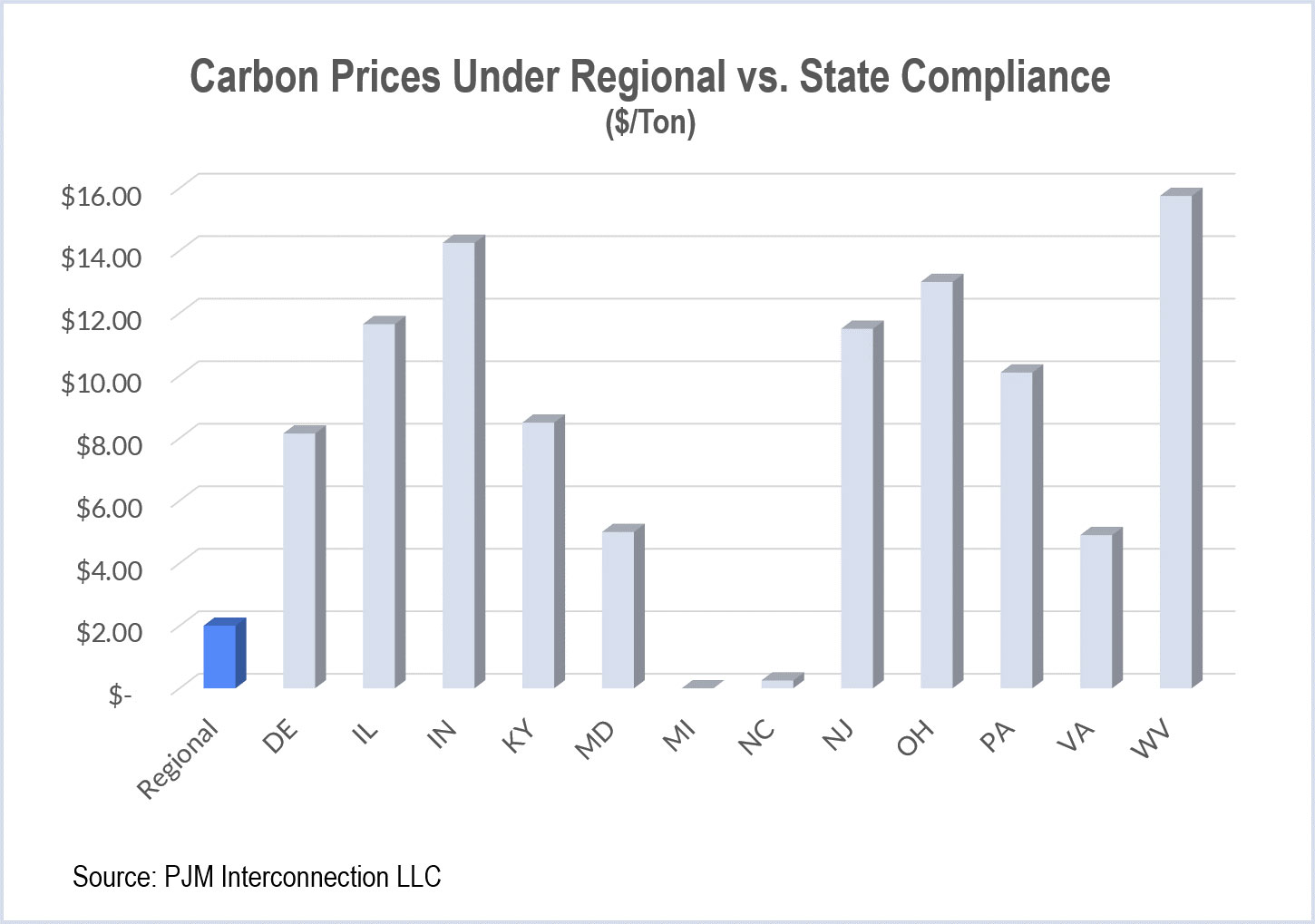State-by-state compliance with the Environmental Protection Agency’s (EPA’s) proposed carbon emission rule would be almost 30% more expensive than a regional approach, according to preliminary results of PJM analyses.
The analyses included eight scenarios requested by the Organization of PJM States (OPSI) and seven proposed by PJM.
One analysis (PJM scenario 4), which included existing fossil resources and planned resources with interconnection service agreements (ISAs) and facility study agreements (FSAs), estimated a 2020 carbon price of $11/ton under state compliance, compared with $2/ton under a regional approach.
PJM determined the CO2 emissions prices based on the price differential needed to ensure the RTO’s economic dispatch displaced enough high-emitting generators with lower-emitting generation to reach the emissions targets.
The regional approach sets a single carbon price for all fossil fuel generators in PJM. Under state compliance, each state would have a different carbon price. Indiana and West Virginia would face the highest carbon prices under a state-by-state approach, with prices exceeding $14/ton, while it would cost Maryland and Virginia only about $5/ton.
Under a regional plan, “states have the ability to trade reductions among each other to achieve lower costs of compliance,” explained Chief Economist Paul Sotkiewicz. Sotkiewicz and PJM engineer Muhsin Abdur-Rahman presented the preliminary results of the analyses at the Members Committee webinar last week.
Total compliance costs would near $45 billion in 2020 under the state approach, versus $35 billion using regional compliance.
Mass-to-Rate Conversion
PJM initially did the analyses based on the implied mass-to-rate conversion in the EPA’s June 2 proposed rule. It redid the calculations based on revised guidance the agency provided Nov. 6, which sets a declining mass target over the interim compliance period (2020-2029) and does not credit new renewables and incremental energy efficiency.
Under the revised conversion, most of the scenarios estimated carbon prices of about $5 to $10 per ton in 2020, rising to $20 to $30 per ton in 2029.
One scenario (PJM #8) saw carbon prices starting at about $40/ton in 2020 and rising to almost $60/ton by 2029. The scenario adjusted planned natural gas capacity based on historic commercial probabilities (greater than 70% for projects with ISAs, greater than 50% for those with FSAs), reduced new combined-cycle capacity to not exceed the installed reserve margin target and assumed a 50% increase in gas prices.
The analyses found that a rate-based approach would result in lower LMPs than a mass-based measurement, meaning generators will need to collect more in capacity revenues. There were little or no increases in LMPs for many scenarios.



